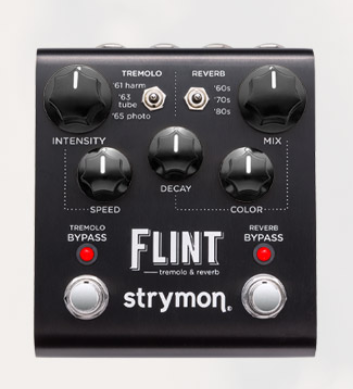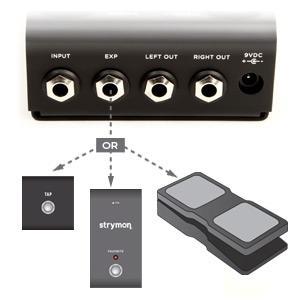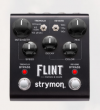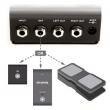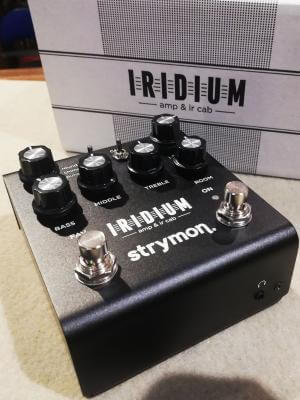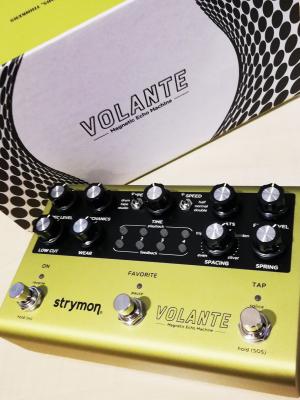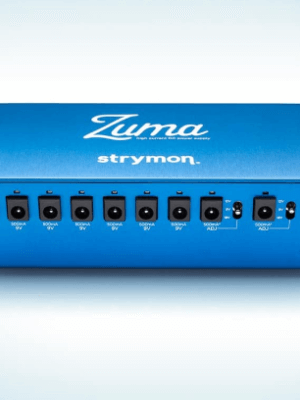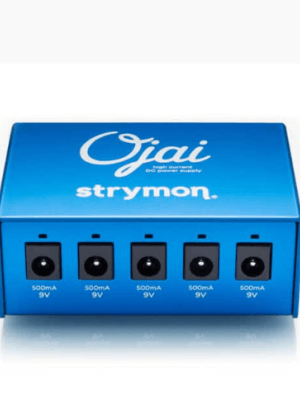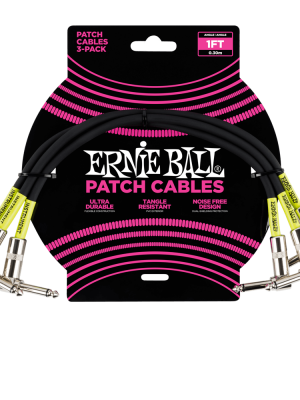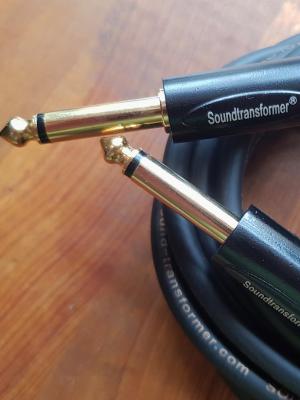Részletes leírás
Ingyenes szállítás
14 nap pénzvisszafizetési garancia
Strymon FLINT Tremolo Reverb specifikáció
The '61 Harmonic Tremolo is somewhat rare due to its very short period of availability in tube amplifiers in the early 1960s. It gets its signature sound through a dual-band filtering effect that alternately emphasizes low and high frequencies. The end-result is a soothing pulse that has shades of a mild phaser effect combined with tremolo due to the nature of the frequency bands that are alternated.
The '63 Power Tube Tremolo utilized the LFO signal to directly influence the power tube bias of the amplifier's push-pull output stage. The power tubes are biased into lower and higher idle currents, creating the fluctuating gain that produces the tremolo effect. The effects of crossover distortion at low tremolo volumes, increased power tube harmonic distortion at maximum tremolo volumes, as well as the influence of power-supply sag, all add up to the boggy and dirty nature of this tremolo circuit.
The '65 Photocell Tremolo is a faithful recreation of the classic photo-trem circuits found in mid-1960s American amplifiers. Those classic circuits used a light-dependent resistor to attenuate the input signal, coupled with a miniature neon bulb that is connected to the LFO. As the LFO oscillates, the bulb gets brighter and dimmer which in turn varies the resistance of the LDR. The varying resistance works with other circuit impedances to change the signal level, which produces a characteristically 'hard' sounding tremolo that moves between two levels, reminiscent of a square wave.
The '60s Spring Tank Reverb is our faithful recreation of the full-size two-spring tank that was commonly used in vintage amps. The two-spring tank uses spring segments of differing delay times, which adds to the complexity of the reverberated sound. Contributing greatly to the sound are the input and output tube circuits which convert the electrical guitar signal into a mechanical signal and then back to an electrical signal.
The '70s Electronic Plate Reverb pays homage to one of the earliest digital reverbs ever created. The astounding hardware-based algorithm used multiple delay-lines configured in parallel, with each delay featuring multiple output taps and filtered feedback paths. The result is a rich, smooth reverb with a very quick build-up in density due to the summation of the many parallel output taps.
The '80s Hall Rack Reverb is our rendition of the now nostalgic digital microprocessor rack reverbs from the late '80s. The limited processing power of the day led to the implementation of efficient regenerative series loops of all-pass filters, delays, and low-pass filters. Modulating delay lines were used to increase the reverb density and add warmth. This reverb provides the signature sound of distinctive early reflections followed by the slowly-building density of the late reverberation.
* Three hand crafted tremolo algorithms faithfully deliver classic tremolo experiences:
'61 Harmonic Tremolo, '63 Power Tube Tremolo, '65 Photocell Tremolo
* Three distinct reverb algorithms:
'60s Spring Tank Reverb, '70s Electronic Reverb, '80s Hall Rack Reverb
* Two tremolo adjustment and tone shaping knobs: Intensity, Speed
* Three reverb adjustment and tone shaping knobs: Decay, Color, Mix
* Four "hidden" knobs for extensive tone tweaking:
Tremolo Boost/Cut, Reverb Boost/Cut, Effect Order, Tap Subdivision
* High impedance mono input (internal jumper enables selectable TRS stereo input)
* Stereo output
* Tremolo Bypass and Reverb Bypass footswitches
* Expression pedal input allows the connection of either an expression pedal (for selectable control over any knob parameter), external tap pedal (for remote tap tremolo), or Favorite switch (to save a Favorite preset)
* Super low noise, high performance 24-bit 96kHz A/D and D/A converters
* 115db typical signal to noise
* +8dBu maximum input level easily handles instrument and line signals
* 20Hz to 20kHz frequency response
* Premium analog front end and output section
* Analog dry path (when Reverb only is engaged)
* Super high performance DSP in a compact form factor
* 32-bit floating point processing
* True Bypass (electromechanical relay switching)
* Selectable "trails" mode with high quality Analog Buffered Bypass
* Adjustable +/- 3dB boost or cut when effect is engaged
* Powered with a standard 9V center negative DC supply, 250mA minimum
* Strong and lightweight black anodized aluminum chassis
* Crafted with love in the USA
